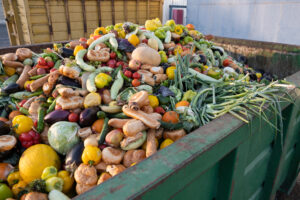
Biodiversity loss has far-reaching challenges on economies, and human well-being.
Similarly, pollution, overexploitation of natural resources, and climate change contribute to the loss of biodiversity by disrupting ecosystems and altering ecological balances.
The consequences of biodiversity loss are profound. Loss of biodiversity also threatens food security, as many crops rely on pollinators and other ecosystem services provided by diverse natural habitats. Furthermore, biodiversity loss can have negative impacts on human health, with the potential to increase the spread of infectious diseases. Addressing biodiversity loss requires a multifaceted approach that combines conservation efforts, sustainable land management practices, and policy interventions.
Here are some eco-responses and strategies to help mitigate biodiversity loss:
Protected Areas: Establishing and expanding protected areas provide refuge for endangered species and promote ecosystem resilience.
Habitat Restoration: Restoring degraded habitats, such as forests, wetlands, and coral reefs, can help reverse the decline of biodiversity. Restoration efforts may involve planting native species and implementing sustainable practices.
Sustainable Land Use: Adopting agroforestry, organic farming, and sustainable forestry, can help minimize habitat destruction and conserve biodiversity while meeting the needs of local communities.
Reducing Pollution: Implementing measures to reduce pollution, such as improving waste management systems and transitioning to clean energy sources, can help mitigate the negative impacts.
Biodiversity loss is a complex and urgent challenge that requires coordinated action at local, national, and global levels. By implementing eco-responses and strategies to conserve and restore biodiversity, we can protect ecosystems, safeguard species, and secure the well-being of present and future generations. Choosing one thing to do may feel like a drop in the bucket, but when each one of us contributes, the collective impact can help make a difference.

More Stories
Living Green: 4 Simple Everyday Habits for a Sustainable Future
Photo: Zero Waste Tea If you want practical tips on how to contribute to green living in your daily life,...
A Closer Look At What Litter Really Does To The Environment
Photo: Thayne Tuason Littering is a pervasive issue that affects communities, wildlife, and natural ecosystems around the globe. It is...
The Environmental Toll of Fast Fashion: A Closer Look at Textile Waste
Photo: Mumtahina Rahman In recent decades, the fashion industry has had significant changes, fueling the rise of fast fashion. While...
Sustainable Dining: A Path to Eco-Friendly Eating by Tackling Food Waste
Photo: Michael Gabler Today more than ever, being environmentally conscious is a part of our daily lifestyle and one of...


